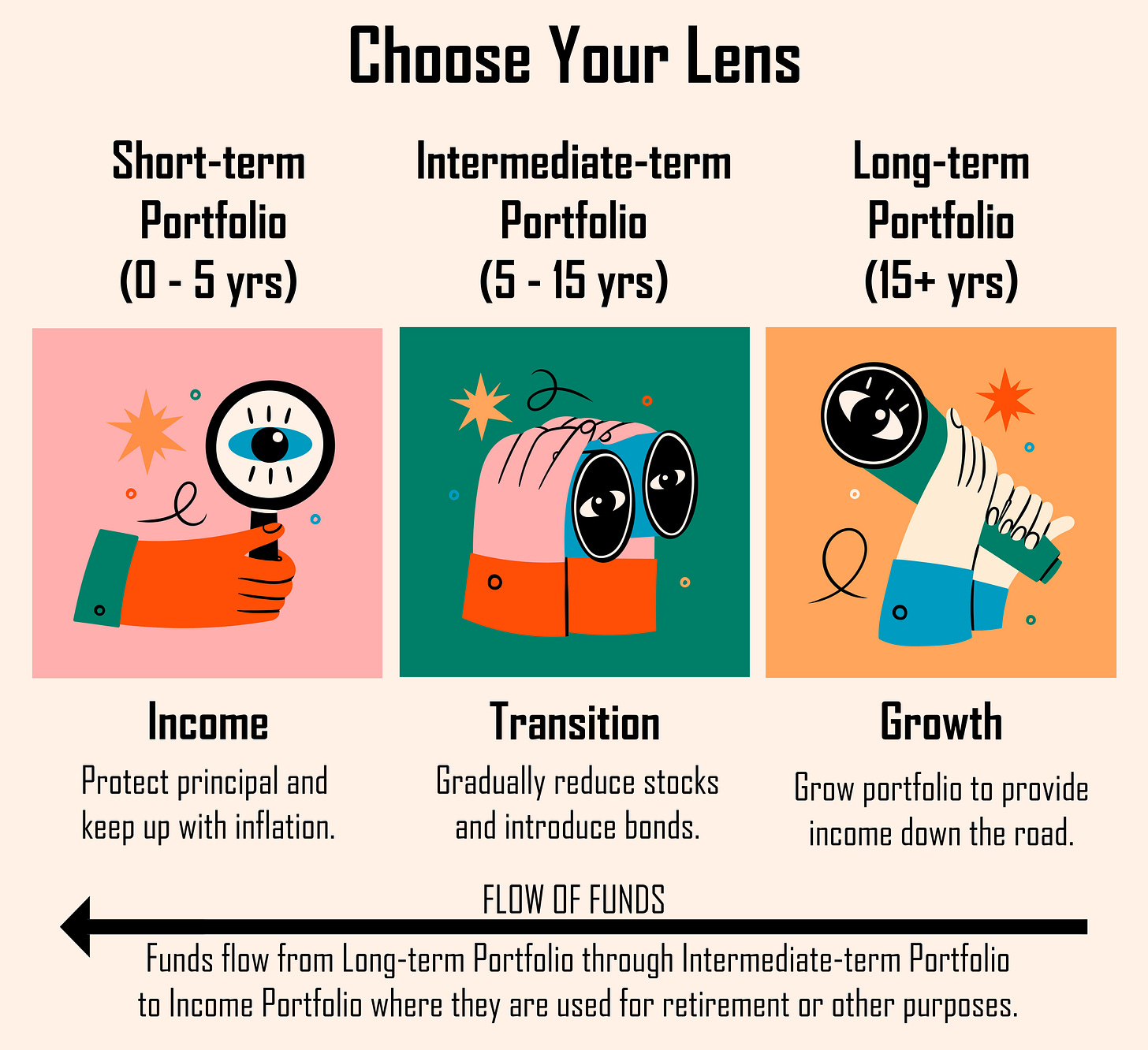Is it Time to Panic Yet?
Recent declines in the stock market have investors on edge—but should they be?
The stock market dropped 5.9% from February 20th through March 4th.
While this is hardly catastrophic, it likely created some angst among investors—especially when it was accompanied by comments by “experts” suggesting this may be the beginning of a larger selloff.
Consider this Wall Street Journal Headline: Stocks Fall as Tariff Fears Ripple Through Economy.
It’s possible the “experts” are right and the selloff will continue.
Then again, maybe they’re wrong.
So, is it time to panic yet?
Is it time to move money from Stocks to Cash—or Bonds, or Cryptocurrency?
And then move back into Stocks when they hit bottom?
But then, how would you know if Stocks have hit bottom? What if you miss getting back in and have to deal with the stress of watching the stock market go back up while you’re on the sidelines?
It’s enough to drive you crazy if you let it.
But you don’t have to let it drive you crazy. You just need to follow sound investment principles.
This is an excellent real-time example of how to put into action the financial strategies we’ve been covering in this Substack.
Stock market declines are normal.
So are recoveries.
As we’ve previously noted, the stock market will recover and set new record highs 100% of the time.
If you could time the market precisely—get out at the top and get back in at the bottom—you would be better off.
Unfortunately, you can’t—and neither can any of the “experts.”
It’s a far greater risk to be out of the market when it goes up than to be in the market when it goes down.
If you had a chance to read our post The Ups and Downs of the Stock Market, you’ll recall that while the stock market may move up and down like a yo-yo, it’s actually like playing with a yo-yo while riding up an escalator.
More importantly, if you read our post Perspective - Choose Your Lens (Core Post No 3), you’ll have noted that we said you should view a portfolio (like a retirement portfolio) as consisting of both a Short-term Portfolio and a Long-term Portfolio (with an Intermediate Portfolio between the two).
As we’ve mentioned several times, Stocks are risky in the short term. They can and will have periods like we’re experiencing at present. It’s a normal part of the process.
This is why we recommend that you never put Stocks in your Short-term Portfolio.
As long as you follow this strategy, you do not need to worry about what Stocks are doing in the short term.
On the other hand, over longer time periods (15+ years), stocks are the least risky of the major asset classes because they have the highest long-term compounding rate.
The higher allocation to stocks in your Long-term Portfolio, the better your chances of achieving your long-term financial goals.
For long-term investors, being out of the market is far more likely to cost you money—potentially a lot of money—than staying in the market and riding out the short-term ups and downs.
As for moving out of Stocks into Cryptocurrency, the short answer is No. Cryptocurrency is not an investment, it is a speculative asset that has no actual intrinsic value. It has value only to the extent that someone will pay more for it than you did—for whatever reason.
Summary
As difficult as it may seem, these short-term declines in the stock market—often driven by some level of panic—are normal. Long-term investors are better off riding it out than trying to time the market.
Your Short-term Portfolio should not include Stocks—meaning there is no reason to worry about short-term stock movements.
Take the long-term view, and you’ll end up with more money and less stress.
Best regards,
Stuart & Sharon






